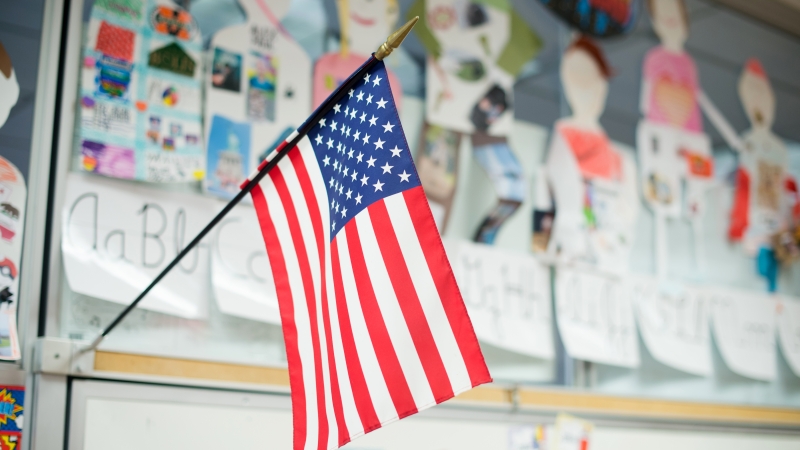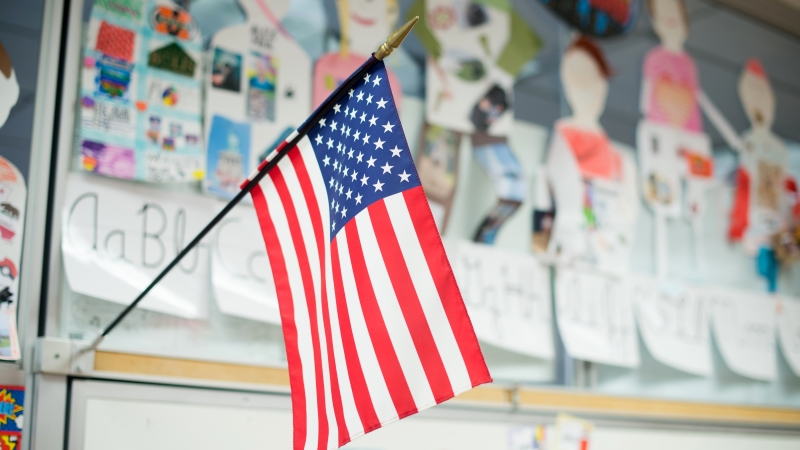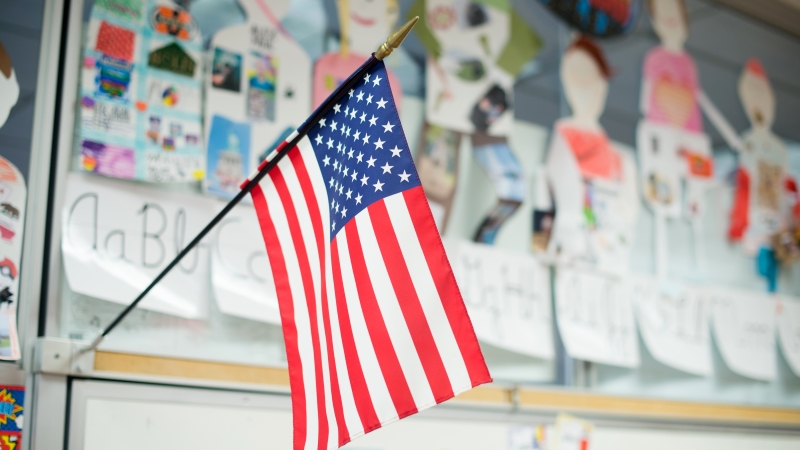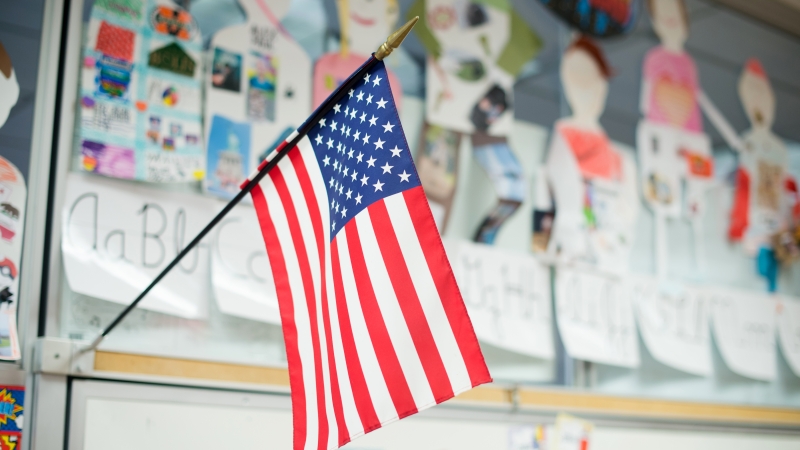
Virginia Board of Education Meeting Summary
2-22/23, 2017
The Board named current Board member Daniel A. Gecker as its new Vice President, and welcomed two new Board appointees Anne B. Holton and Dr. Jamelle S. Wilson.
Committee on School and Division Accountability
The Committee reviewed their proposed new accountability measures, Graduation Completion Index (GCI) and Dropout Rate (DR) that were initially discussed at their January meeting. Their four-level matrix with DRAFT criteria and the growth required for each of these measures was reexamined for how they measure their currently proposed status levels of “Level 1 Exemplar,” “Level 2 Monitor,” “Level 3 Guide,” and “Level 4 Intervene.”
The Committee considered the GCI and the DR and the relationship among School-Level Graduation Completion Index Percentages and student demographics. With a correlation being significant at the .01 level, the results of the analysis were as follows:
• Economic Disadvantaged – Weak Correlation (-0.20);
• Students With Disabilities – Weak Correlation (-0.23); and
• English Learners – Strong Correlation (-0.73).
Based upon stakeholder feedback regarding the accountability measures, GCI and DR, the Committee discussed the following:
• Allowances for student immigrants over 17 who enroll in school for the first time who have limited language skills and students who enroll, are over 17 and who have limited credits earned;
• Concerns from some school divisions regarding the use of dropout as an indicator due to special circumstances;
• Codes to record a student’s exit status currently number 48. VDOE can explore the use of more codes for special circumstances; and
• Supports that can be provided to schools to ensure that students are coded properly so that a reliable report of dropout is collected.
The Committee also examined the relationships among school-level academic achievement and student demographics percentages. With a correlation being significant at the .01 level, the results were as follows:
• Economic Disadvantaged – English - Strong (-0.66), Math - Strong (-0.55), Science - Strong (-0.55), Writing – Strong (-0.67) and History - Moderate
(-0.45);
• Students with Disabilities – English - Weak (-0.13), Math - Weak (-0.16), Science - Weak (-0.12), Writing - Weak (-0.24) and History - Weak, (-0.12); and
• English Learners – English - Weak (-0.29), Math - Weak (-0.25), Science - Moderate (-0.40), Writing - Weak (-0.19) and History - Weak (-0.20).
As it concluded its discussion of the accountability measures, Graduation Completion Index and Dropout Rate, the Committee determined that further research was needed concerning the practical meaning of these correlations, the utilization of the previously discussed matrix and ways to recognize continuous improvement and/or exemplar performance.
The Committee then turned its attention to the accountability measure of Chronic Absenteeism. This measure was defined as students who are enrolled in a given school for at least 50 percent of the school year and who miss 10 percent of the school year (18 days). A four-member panel representing the Culpeper Juvenile and Domestic Relations District Court, 16th Judicial District of Virginia, the Virginia Association of School Superintendents, the Newport News Public Schools Outreach Services and the Page County Public Schools Director of Student Services and Title-I addressed a variety of issues surrounding chronic absenteeism. The panel addressed the following: systemic changes in school climate and culture; relationships with students and families; the need to stop blaming families; the importance of good teachers; wrap around services for students and parents; and various programs that have had an on impact chronic absenteeism.
Following the panel discussion, the Committee examined research related to chronic absenteeism. Studies show the following:
• Attendance makes a significant difference in student achievement and growth;
• Attendance explains about 25 percent of the overall poverty achievement gap; and
• School-based action can make a significant difference in student attendance.
Chronic Absenteeism data patterns for a three-year average chronic absenteeism rate for school years 2013-14 through 2015-16 show that that the distribution of chronic absenteeism among Virginia schools is skewed, but the average is still 10.73 percent of students who are chronically absent. Using a three-year average stabilizes the scores so that schools aren’t annually moving across accountability levels. The standard deviation is 7.32.
The Committee examined the following DRAFT Criteria for Chronic Absenteeism Benchmark Selection to include the number of schools that would currently be at each level:
• “Level 1 Exemplar” – School three-year average chronic absenteeism rate is less than 8% (762 schools);
• “Level 2 Monitor” – School three-year average chronic absenteeism rate is between 8% and 15%. OR School in Level 3 the prior year decreases chronic absenteeism rate by 2% or more. (756 schools)
• “Level 3 Guiding” – School three-year average chronic absenteeism rate is between 16% and 24%. OR School in Level 4 the prior year decreases chronic absenteeism rate by 2% or more. (200 schools)
• “Level 4 Intervene” – School three-year average chronic absenteeism rate is 25% or higher. School has stayed at criteria for Level 3 for more than 3 consecutive years (65 schools).
Following its discussion of Chronic Absenteeism, the Committee received an update on the Petersburg City Public Schools Memorandum of Understanding.
Regular Business Meeting
Proposed Regulations Governing the Use of Seclusion and Restraint in Public Elementary and Secondary Schools in Virginia (Proposed Stage)
The Board received for third review the proposed Regulations Governing the Use of Seclusion and Restraint in Public Elementary and Secondary Schools in Virginia. The Board discussed the following 12 decision points:
• Decision Point 1: “Seclusion” means the involuntary confinement of a student alone in a room or area from which the student is physically prevented from leaving until the student no longer presents an immediate danger to self or others.
- Issue: Parent and advocacy groups have urged that seclusion is so dangerous that it should never be used.
- STAFF RECOMMENDATION: Allow seclusion as per the draft language as other provisions discussed provide safeguards.
- BOARD FEEDBACK: Consensus was reached on this item.
• Decision Point 2: Definition of Seclusion – “Seclusion” means the involuntary confinement of a student alone in a room or area from which the student is physically prevented from leaving until the student no longer presents an immediate danger to self or others.
- Issue: Currently drafted option includes an exception from the definition of seclusion for confinement of a student in a room where the student is not free to leave during the investigation by school officials of a violation of the Code of Student Conduct. The reason the exception was included: School representatives did not want to be hamstrung staff in an instance where there is a drug deal or a fight, students involved are placed in separate rooms and the principal goes back and forth to investigate the incident.
- STAFF RECOMMENDATION: Eliminate draft language as students should not be left without adult supervision.
- BOARD FEEDBACK: Consideration needs to be given to a student’s age. Language regarding property damage will be deleted.
• Decision Point 3: Definition of Seclusion - Contains certain exceptions to the definition of seclusion; one of the exceptions contains the caveat “so long as the student is not physically prevented from leaving”.
- Issue: Parent and advocacy groups believe that all the exceptions to the definition should incorporate the concept that the student must be “free to leave”.
- STAFF RECOMMENDATION: Expand the concept of “not physically prevented from leaving” to all exceptions. The size of the room will not be addressed. Only adequate light, ventilation etc. will be addressed.
- BOARD RECOMMENDATION: Staff needs to go back during the APA process and make sure that it is very clear that the requirements in the document are strictly for extreme circumstances and not for Code of Conduct or behavior violations. Specifically, double negatives in the current language need to be avoided.
• Decision Point 4: Standards for Seclusion Rooms – Draft regulations includes specifications on size of room, ability to monitor space, light fixtures and controls, materials, contents, etc.
- Issue: Superintendents from Region 7 requested that schools be allowed to determine their own specifications. Other groups asked for flexibility on what types of items could be in the room, e.g., sensory items, and to eliminate the reference to a mattress being the only thing permitted in the room.
- STAFF RECOMMENDATION: Maintain current language, but modify to allow flexibility with regard to contents, so long as the items do not pose a danger to the student.
- BOARD RECOMMENDATION: Consensus was reached on this item.
• Decision Point 5: Prone and Supine Restraints - Current draft bans both techniques.
- Issue: School representatives and representatives from one of the training organizations involved in restraint and seclusion expressed concern that there may be instance in emergencies when such restraints are unavoidable. Alternatively, they urge that restraints that restri8ct the airway be banned.
- STAFF RECOMMENDATION: Adopt language from the 15 Core Principles from the U.S. Department of Education.
- BOARD RECOMMENDATION: Consensus was reached on this item.
• Decision Point 6: Notification and Reporting to Parents – Current draft requires that reasonable efforts be made to notify parents of an incident involving restraint or seclusion within one calendar day of the incident.
- Issue: Parents and advocacy groups argued for same day notification. School organizations believed that the requirement was too onerous and ought to be change to one school day
- STAFF RECOMMENDATION: Modify to include same day notification.
- BOARD RECOMMENDATION: Do not require notification the same day. A “reasonable effort” must be made as soon as possible. Contact needs to be made in multiple avenues.
• Decision Point 7: Notification and Reporting – Incident Report Timing: Draft requires written report within two school days.
- Issue: Superintendents’ groups indicated that the timeline was impractical. Special Education administrators urged changing the time to five school days. Some parents wanted written reports within one calendar day.
- STAFF RECOMMENDATION: Retain current language.
- BOARD RECOMMENDATION: Consensus was reached on this item.
• Decision Point 8: Notification and Reporting – Content: Draft requires that the incident report address fifteen items.
- Issue: Special education administrators urged that the following items be deleted as not necessary for thorough reporting: A detailed description of the physical restraint or seclusion method used; The student behavior that justified the use of restraint or seclusion; Description of prior events prompting the behavior, if known; Description of any less restrictive interventions attempted; when the student has an IEP, a Section 504 plan, a behavior intervention plan or other plan.
- STAFF RECOMMENDATION: Retain current language.
- BOARD RECOMMENDATION: Page 11 delete to “inform parent thoroughly” and redo this section to describe what should be included in the process of informing parents.
• Decision Point 9: Notification and Reporting – Student Debriefing – Draft regulations require that the student and principal or designee meet to debrief about the incident.
- Issue: Parent and advocacy groups have requested that the debriefing include individuals other than the student and principal or designee. More specifically a number of groups and individuals requested regulations require that the parent be invited.
- STAFF RECOMMENDATION: Retain current language.
- BOARD FEEDBACK: Make debriefing permissible, but not a requirement. Parents should be encouraged to be engaged.
• Decision Point 10: Prevention; Use of Multiple Instances of Restraint and Seclusion – Non IEP/504 Students – Requires that a school team convene after two incidents to consider, among other things, behavioral supports and the possibility of a referral for evaluation.
- Issue: Parent and advocacy groups have requested that, for students, without IEP’s or Section 504 plans, automatically trigger an evaluation.
- STAFF RECOMMENDATION: Retain current language.
- BOARD FEEDBACK: Consensus was reached on this item.
• Decision Point 11: Prevention; Use of Multiple Instances of Restraint and Seclusion – Trigger – Current language requires debriefing after two instances of restraint and seclusion.
- Issue: School commenters believed that there should be more flexibility with regard to when a review should be triggered, noting that students with the most challenging behaviors might be restrained multiple times in a day.
- STAFF RECOMMENDATION: Retain current language
- BOARD FEEDBACK: Add language that addresses seclusion multiple times in one day.
• Decision Point 12: Training – Requires training for all school personnel in de-escalation, and the restraint and seclusion regulations; requires advanced training for personnel employed in self-contained special education settings.
- Issue: One advocacy group proposed replacing advanced training for personnel in self-contained settings with advanced training for a school-based crisis team. School groups expressed concerns about the lack of specificity regarding the training and about the cost.
- STAFF RECOMMENDATION: Retain current language, but provide that VDOE will develop and provide the first level training module.
- BOARD FEEDBACK: Add language that addresses situations where students are not necessarily in self-contained special education settings. Training in prevention techniques should be emphasized. The Board can require training for relicensure. This would not be an unfunded mandate because the Board would be required to provide this training. Training will need to be offered periodically utilizing several tiers.
A complete DRAFT of the proposed Seclusion and Restraint regulation can be found at: http://www.doe.virginia.gov/boe/meetings/2017/02-feb/agenda-items/item-b.pdf.
It is important to note that these regulations have the potential to affect most personnel in school buildings and not just those in a special education-related setting. The Virginia Department of Education will continue to receive public input on the proposed regulations. Based upon the Board’s guidance, it is the intent for staff to present regulations for Final Review on March 23, 2017.
Recommendation of the Advisory Board on Teacher Education and Licensure (ABTEL) for a Passing Score for the Praxis Algebra I (5162) Test for the Mathematics – Algebra I (Add-on) Endorsement
The Board approved the Advisory Board on Teacher Education and Licensure’s recommendation to: approve the use of the Praxis Algebra I (5162) test as a professional teacher’s assessment as an option to add the Mathematics – Algebra I (add-on) endorsement to a teaching license as prescribed by the licensure regulations; to set a passing score of 148 for the test; and to revise the passing score after sufficient performance data become available.
The Algebra I (516 2) test will allow individuals with a teaching license to add the Mathematics – Algebra I (add-on) endorsement by testing in accordance with the licensure regulations. ABTEL’s rationale for their recommendation to set the passing score one Conditional Standard Error of Measurement below the multi-state panel’s recommended score is that the Algebra (5162) test is a new assessment, and no performance data are available at this time. The Advisory Board also recommended that the passing score be reviewed after sufficient performance data become available for the test.
Recommendation of the Advisory Board on Teacher Education and Licensure (ABTEL) to Revise the Definitions of At-Risk of Becoming Low-Performing and Low-Performing Institutions of Higher Education in Virginia as Required by Title II of the Higher Education Opportunity Act (HEOA)
The Board received for first review the Advisory Board on Teacher Education and Licensure’s recommendation to revise the definitions of “at-risk of becoming low-performing” and “low-performing” institutions of higher education in Virginia as required by Title II of the Higher Education Opportunity Act (HEOA). Under the Title II regulations, all states are required to implement a system to assess the quality of each teacher preparation program. New federal regulations, effective November 30, 2016, require that each state must differentiate programs using at least three performance levels, no later than October 31, 2019. The federal regulations include a new performance level of “effective,” as well as definitions of “at-risk of becoming a low-performing institution of higher education” and “low-performing institution of higher education.” However, to comply with current reporting requirements, the definitions must be aligned with the accreditation option for Council for the Accreditation of Educator Preparation. Title II federal reporting is required by states in October of each year. Institutions meeting these definitions at the end of the reporting year will be designated “at-risk of becoming a low-performing” or “low-performing” institution of higher education.
Process for State Approval of Textbooks for K – 12 History and Social Science
The Board waived first review and granted approval for the Department of Education to proceed with the review of K-12 History and Social Science textbooks beginning in March 2017. Local school divisions are expected to fully implement the 2015 History and Social Science Standards of Learning during the fall of 2018. School divisions are awaiting a Board approved list in order to adopt and purchase necessary resources and materials for full implementation. Moving the process forward will facilitate getting this list to all school divisions. The approval process for K-12 history and social science textbooks is as follows:
• February 2017 The Board of Education (Board) approves the textbook schedule for the approval of K-12 History and Social Science textbooks.
• March 2017 The Department of Education (DOE) invites publishers to submit textbooks for review. DOE seeks nominations for qualified educators and content experts to serve on the textbook review committees. Publishers indicate their intent to submit textbooks on completed certification and agreement forms that are required by the Board in its state approval process.
• April 2017 Review committees of K-12 educators and content experts with advanced degrees in the field are determined. DOE reviews the certifications and agreements and works with publishers to address concerns. Incomplete forms may result in the textbook being removed for consideration for review.
• May 2017 DOE notifies the publishers of the evaluation committee members for the purpose of sending all the textbooks under consideration for approval to these reviewers.
• June 2017 Committee members use the evaluation criteria to review the textbooks independently for Standards of Learning (SOL) correlations, content, bias, and design for instructional planning and support.
• July 2017 Members of the review committee submit their individual textbook analyses to DOE staff for aggregation.
• August 2017 The full evaluation committee convenes to reach consensus on their reviews of the submitted textbooks.
• September 2017 The consensus evaluations are shared with publishers.
• October 2017 Publishers are given an opportunity to respond to the committee’s reviews and recommendations.
• November 2017 The Board receives the proposed list of textbooks for first review, along with information from the textbook publishers’ certifications and agreements.
Process for State Approval of Textbooks for K-12 Mathematics
The Board waived first review and granted approval for the Department of Education to proceed with the review of grant approval for the Department of Education to proceed with the review of K-12 Mathematics textbooks beginning in March 2017. Local school divisions are expected to fully implement the 2016 Mathematics Standards of Learning during the fall of 2018. Waiving first review will enable staff to get the necessary information to all school divisions in a timely manner. The timeline for the approval process for K-12 mathematics textbooks is as follows:
• February 2017 The Board of Education (Board) approves the schedule for the 2017 Approval Process for K-12 Mathematics Textbooks.
• March 2017 The Virginia Department of Education (VDOE) invites publishers to submit textbooks for review. VDOE seeks nominations for qualified educators and content experts to serve on the textbook review committees. Publishers indicate their intent to submit textbooks on completed certification and agreement forms that are required by the Board in its state approval process.
• April 2017 Review committees of K-12 educators and content experts with advanced degrees in the field are determined. VDOE reviews publisher certifications and agreements and works with publishers to address concerns. Incomplete forms may result in the textbook being removed for consideration for review.
• May 2017 VDOE notifies the publishers of the evaluation committee members for the purpose of sending all the textbooks under consideration for approval to these reviewers.
• June 2017 Committee members use the evaluation criteria to review the textbooks independently for Standards of Learning (SOL) correlations, content, bias, and design for instructional planning and support.
• July 2017 Members of the review committee submit their individual textbook analysis to the VDOE staff for aggregation.
• August 2017 The full evaluation committee convenes to reach consensus on their reviews of the submitted textbooks.
• October 2017 The consensus evaluations are shared with publishers.
• November 2017 Publishers are given the opportunity to respond to the committee’s reviews and recommendations.
• January 2018 The Board receives the proposed list of textbooks for first review, along with information from the textbook publishers’ certifications and agreements.
• February 2018 During a 30-day public comment period, the public is invited to review copies of the books that have been placed around the state and to provide comment to the Board.
• March 2018 The Board reviews all public comment, considers the list, and approves the textbooks. VDOE posts a list of approved textbooks with prices and information from the textbook publishers’ certifications and agreements on the VDOE’s website.
• Ongoing The public may provide ongoing feedback regarding inaccuracies in approved textbooks.
Reports
The Board received reports on the following:
Report on the Timeline for the Development of the Computer Science Standards of Learning. The timeline is as follows:
o February – April 2017
- DOE comment page published.
- Supts. Memo released.
- Steering Committee develops draft standards.
- Review of public comment.
- Teacher Review Committee created.
o February – June (early) 2017
- Teacher Review Committee reviews draft standards, research, and public comments. Makes recommendations.
- Draft standards updated from Teacher Review Committee work.
- External Committee review updated standards.
- Steering Committee returns.
o June 2017
- First review of standards by Board of Education
o July – September 2017
- Standards released for public comment
- Public hearings held
- DOE and Steering Committee meet
o September 2017
- Final review of Standards by the Board
o October 2017
- Public release of Standards
Report on the Timeline and First Draft Outline for the Educational Technology Plan for Virginia: 2017-2022
o January – March 2017
- Supts. Memo released
- Notify stakeholders and encourage feedback
- Draft outline presented to Board of Education
- Review of public comment
- Review Team created from divisions and stakeholder groups
- Focus groups meetings held
o March – June 2017
- Review Team reviews documents, along with comments from the public and focus groups. Creates draft plan.
o July – September 2017
- DOE prepares draft plan
- First draft of plan posted for public comment
- First review of plan by Board of Education
- First draft of plan updated based upon Board feedback
o September 2017
- Final review of Standards by the Board
o October 2017
- Updated draft of plan released for public comment
o November 2017
- Public Comment reviewed
- Final review of plan by Board of Education
o December 2017
- Public Release of Plan
Legislative Report: 2017 General Assembly
The Board reviewed legislation that could or will impact the Board with the understanding that some bills are still in conference, some are still awaiting action and others are on the Governor’s Desk for signature.





